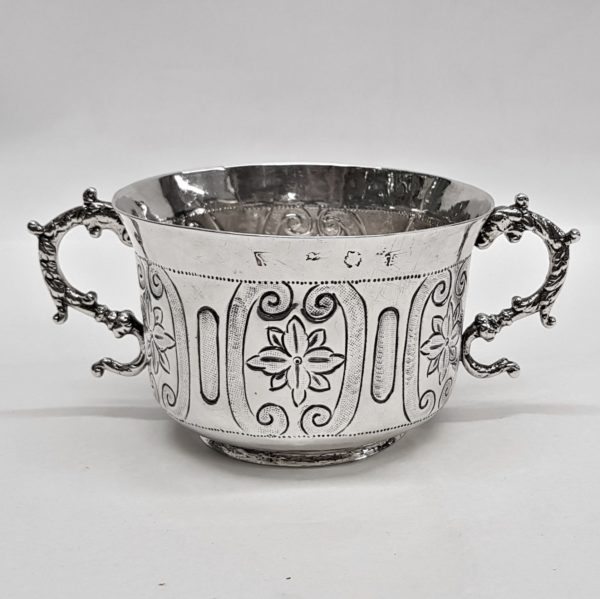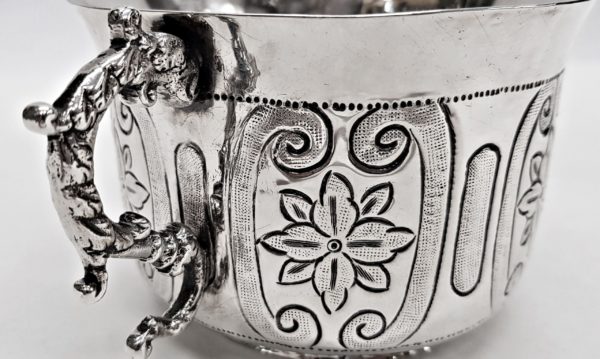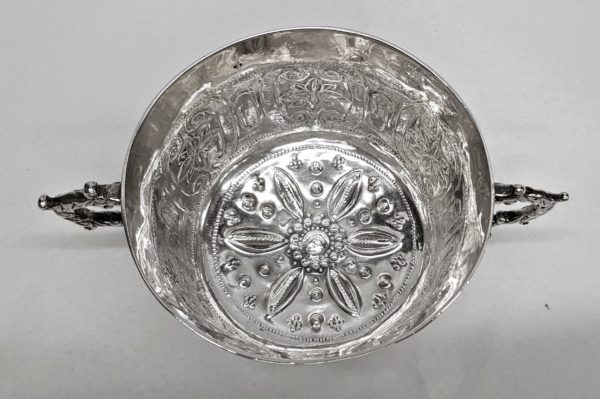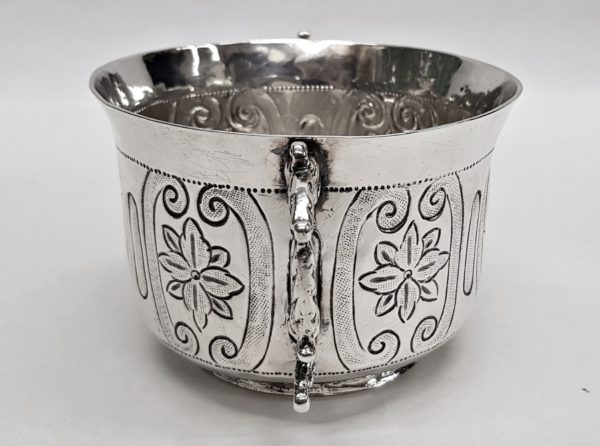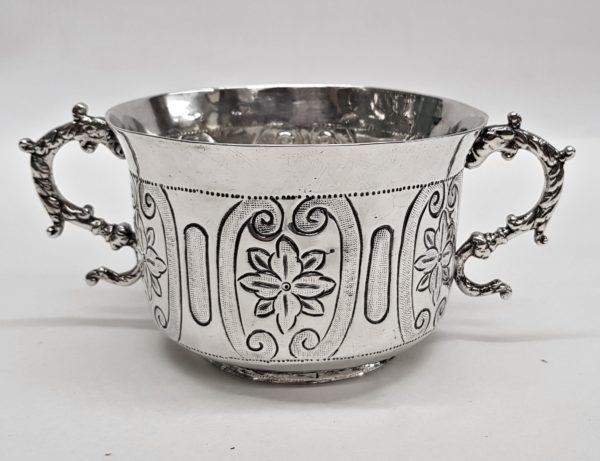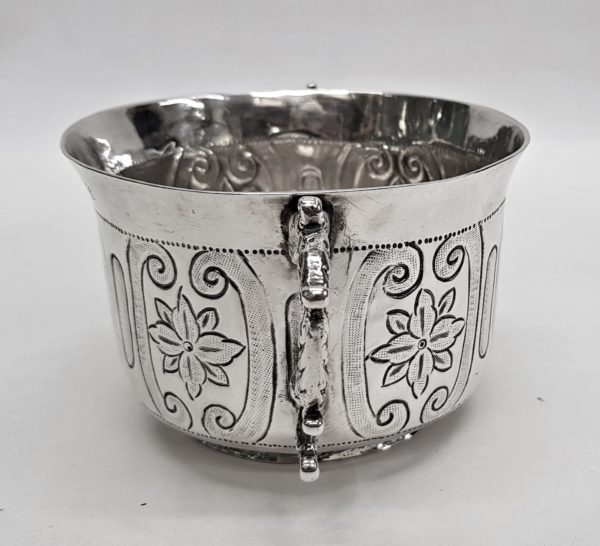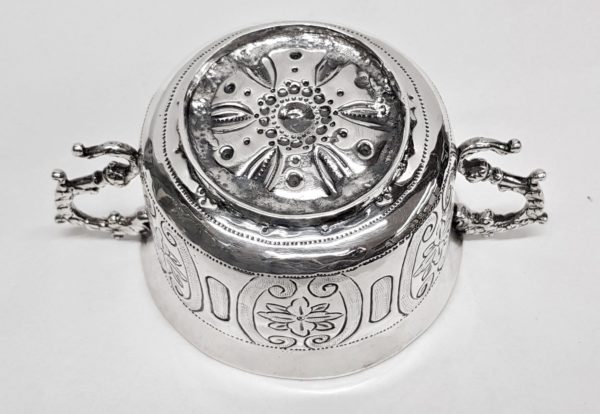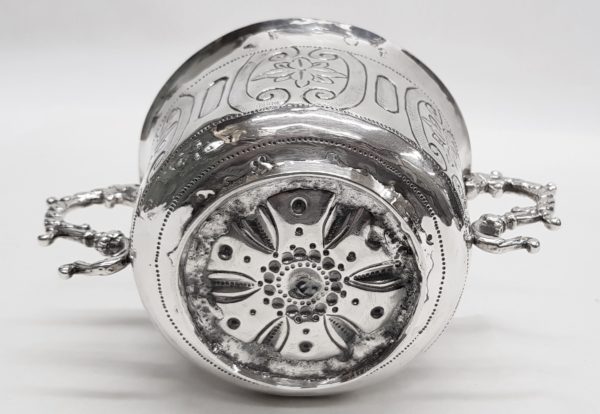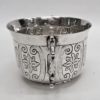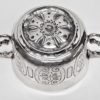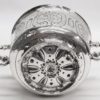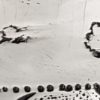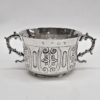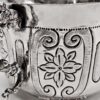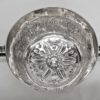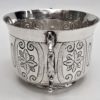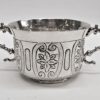Antique Commonwealth Period Silver Porringer
SOLD
Stock: 9384
Date: 1657
Maker: Christopher Shaw
Country: England
A very rare piece of early English antique silver. A sterling silver caudle cup with cast serpent shaped side handles...
Description
Condition
This outstanding example of early English silver is in very good condition with no sign of damage or repair. Lovely patina. Good weight. The blobby mercury solder marks seen to the base of the porringer are original to the manufacture of the piece and add to its authenticity.
Maker Information
Maker: Christopher Shaw
Christopher Shaw, London silversmith, apprenticed to William Cooke 1631, turned over to Robert Preston 1637, free 1639. During his career he bound 7 apprentices, the last being his son Richard in 1663. Shaw died circa 1670.
Our Guarantee
Customer satisfaction is our primary concern
All silverware on our website is checked thoroughly prior to offering it for sale and every product listing contains a condition report and details of the silver hallmarks.
All items offered on our website include:
- Free Shipping Worldwide
- Tracked and Insured
- 14 day no quibble money back guarantee
- We are accredited members of LAPADA and conform to their strict professional standards
- We dispatch 1-3 days after receiving cleared payments
More detailed information about deliveries, returns and how to pay is available in the Help section at the bottom of this page.

